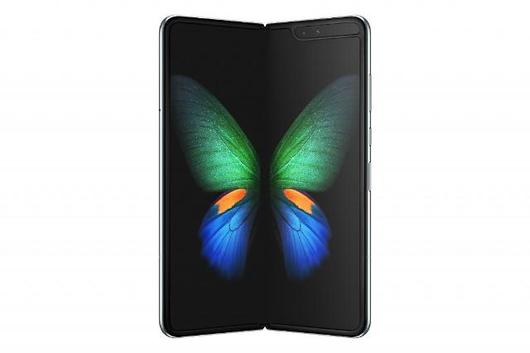 |
<이미지를 클릭하시면 크게 보실 수 있습니다> |
SEOUL -- Galaxy Fold, the foldable smartphone unveiled by Samsung Electronics, enables users to take high-quality pictures in various angles with three rear-facing cameras, two front-facing cameras and a single camera on the cover.
The foldable phone with a 4.6-inch Active Matrix Organic Light Emitting Diodes (AMOLED) sub display and the main 7.3-inch AMOLED display becomes a tablet when folded out. The display is made of new materials which are tougher and more flexible than other displays. It also has a built-in fingerprint scanner on the side where the thumb usually rests.
Galaxy Fold's two main bodies are connected by a specially designed hinge that opens and closes smoothly like a book. Sophisticated interlocking gears are hidden in the casing of the hinge for a seamless look. The foldable smartphone has its components including two batteries distributed evenly so that users feel comfortable while holding it.
To provide intuitive, seamless transitions between the cover and the main displays, Samsung has focused on maintaining the continuity of user experience. When Galaxy Fold is folded and opened, apps will automatically switch displays, enabling users to continue what they were doing.
It houses a powerful 7nm 64-bit Octa-core processor capable of simultaneously running three apps on the large screen, but the type of the main processor chip could vary depending on which region the phone is released. Galaxy Fold uses Qualcomm's Snapdragon chips in overseas markets and self-developed Exynos chips at home.
Exact information about Galaxy Fold's processor was not disclosed. While Galaxy Fold provides 512GB of storage, it does not have a MicroSD card slot used to expand storage. The cheapest version of Galaxy Fold will come with a price tag of $1,980.
Galaxy Fold operates on One UI, a new user interface which provides more natural and comfortable user experiences.
Park Sae-jin Reporter swatchsjp@ajunews.com
Park Sae-jin swatchsjp@ajunews.com
- Copyright ⓒ [아주경제 ajunews.com] 무단전재 배포금지 -
이 기사의 카테고리는 언론사의 분류를 따릅니다.
기사가 속한 카테고리는 언론사가 분류합니다.
언론사는 한 기사를 두 개 이상의 카테고리로 분류할 수 있습니다.
언론사는 한 기사를 두 개 이상의 카테고리로 분류할 수 있습니다.


